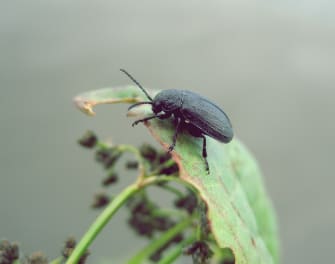By now you may have started your garden and are well on your way to enjoying the miracles of nature. Chances are your plants will thrive, but if they don’t it could be because of these common issues. If it happens to you, don’t fret! In this article we will advise you on what to look for and what to do if you see evidence of these threats.

Pay attention
Make sure you look closely at your plants every couple of days. You should be able to spot things like fungus, insect damage rather quickly and without a trained eye. If you see something that doesn’t look quite right, pluck a leaf or take a picture. We can be much more effective helping you diagnose an issue if we have a visual cue.
Act early
The adage applies here. Catch small problems before they become big problems and ruin your entire crop. Be sure to closely inspect leaves and stems every couple of days. You could miss early disease signs if you simply walk by. Get a closeup view. Get dirty!
It’s not your fault,or is it?
We hate saying “it depends” but your incorrect watering patterns could contribute to a disease problem. Even if you are watering perfectly you could be receiver of plain old bad luck. Either way, be sure to see our previous post about proper watering.
So let’s dig into what some of the common concerns facing your garden in New York.
Powdery Mildew
What is it? I’ll spare you the scientific name and explain it as a powdery substance almost as if someone came by in the dark of night and dusted your plants with flour. It will start out as circular, powdery white spots that could appear on leaves, stems or even the fruit or vegetable itself. If left untreated, it will spread and actually deform the plant. This is because the fungus robs the plant of needed nutrients leaving the plant struggling to survive. Eventually, the fungus wins and the leaves will turn yellow and dry up. Sounds pretty ugly right? This is why we want you to visibly inspect your garden regularly.
Being a fungus, it thrives on warmth, humidity and moisture. But even if you are not over watering, you could still contract powdery mildew. The spores are transported through the wind or hitch a ride with insects. Typically, you will see this later in the growing season when temperatures are at their hottest.
Getting Rid of It
There are a few wives tale about ridding your garden of powdery mildew. One of them is to run off the infected area with your hands. We really don’t recommend this because its not effective. You will end up missing spots and you just scatter the spores to your other plants faster.
The second method is to remove the infected plants and destroy them. If you choose this method, remember DO NOT to add these plants to your compost pile.
Lastly is the method we recommend. The preferred way to rid your garden of powdery mildew is to spray with an environmentally friendly fungicide.
Beetles
“Ewww” is the word that comes to mind when we think about beetles. It’s difficult to narrow down the variety because a whopping 350,000 species exist. Most of them would love to visit your garden!
Generally speaking, they survive by sucking sap from leaves and stems. Depending on the variety, you may see holes in your plant leaves. The result is your plant growth will be stunted and if you have a severe outbreak, it will kill your plants.
So what should you do?
We have a few options that include an organic method using biological control or traps. The organic control uses a product called Spinosad. It comes in several different product names, including Capt. Jacks Dead Bug Brew.. This product should be part of every gardeners tool box. An early application is more effective and can be used preventatively because it's an organic mode of action. Waiting to apply a treatment may compromise results and you’ll be faced with a decision to use non-organic products or abort the crop.
Traps aren’t considered an ideal control method however they will remove a large percentage of the pest population. Just be sure to place your traps as far away from the garden as possible. The concept of luring pests is effective using pheromones, you just don’t want to lure them to the garden. Lure them as far away as possible.
Here is a handy guide to help you quickly determine the variety of your unwelcome pests:
The “skeletonized” pattern of leaves is a telltale sign of Japanese Beetles
Flea beetles chew smaller random holes in leaves
Aphids don’t make holes, but they do literally suck the plant dry resulting in curled leaves
As experienced horticulturalists, we have likely seen just about anything that can happen to your garden. It's fair to say that eventually you will experience some form of plant blight or insect problem. It may not be this season or the next, but when an issue arises, hopefully you will now know what to look for. We are always here for you if you need a second opinion.
Happy and Healthy Gardening!
